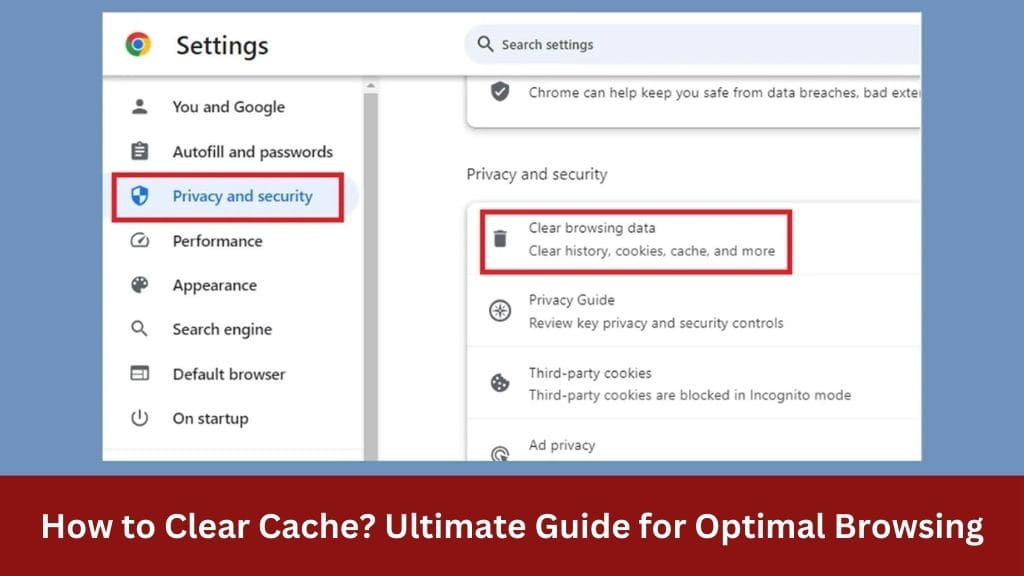In today’s digital age, where we spend a significant portion of our time browsing the internet, the cache plays a crucial role in enhancing our online experience. However, there are instances where clearing the cache becomes necessary to resolve performance issues or ensure privacy. In this comprehensive guide, we’ll delve into the intricacies of clearing cache, covering everything from understanding what cache is to step-by-step instructions for different devices and browsers.
Understanding Cache
Before we dive into the methods of clearing cache, it’s essential to grasp the concept of cache and its significance in web browsing.
What is Cache?
Cache refers to temporary storage that stores copies of frequently accessed data for quick retrieval. When you visit a website, elements such as images, scripts, and stylesheets are downloaded and stored in the cache. Subsequent visits to the same website can be faster because the browser can retrieve some resources from the cache instead of downloading them again.
Why Clear Cache?
While cache improves browsing speed and efficiency, there are scenarios where clearing it becomes necessary:
- Performance Issues: Over time, the cache can accumulate a large amount of data, potentially leading to performance issues such as slow loading times or browser crashes.
- Privacy Concerns: Cached data may include sensitive information like login credentials or browsing history, posing privacy risks if someone else gains access to your device.
- Website Updates: Clearing cache ensures that you’re viewing the most up-to-date version of a website, especially after recent changes or updates.
Methods for Clearing Cache

Now that we understand the importance of clearing cache let’s explore the various methods to accomplish this task across different devices and browsers.
Clearing Cache on Desktop Browsers
Google Chrome
- Open Chrome and click on the three-dot menu icon in the top-right corner.
- Select “More tools” and then “Clear browsing data.”
- Choose the time range for which you want to clear the cache.
- Check the box next to “Cached images and files.”
- Click on “Clear data” to confirm.
Mozilla Firefox
- Launch Firefox and click on the three-line menu icon in the top-right corner.
- Select “Options” and then “Privacy & Security.”
- Scroll down to the “Cookies and Site Data” section.
- Click on “Clear Data.”
- Check the box next to “Cached Web Content.”
- Click on “Clear” to confirm.
Microsoft Edge
- Open Edge and click on the three-dot menu icon in the top-right corner.
- Select “Settings” and then “Privacy, search, and services.”
- Under “Clear browsing data,” click on “Choose what to clear.”
- Check the box next to “Cached images and files.”
- Click on “Clear now” to confirm.
Clearing Cache on Mobile Browsers
Safari for iOS (iPhone/iPad)
- Open the Settings app on your iOS device.
- Scroll down and tap on “Safari.”
- Tap on “Clear History and Website Data.”
- Confirm your action by tapping “Clear History and Data.”
Chrome for Android
- Launch Chrome and tap on the three-dot menu icon in the top-right corner.
- Select “Settings” and then “Privacy.”
- Tap on “Clear browsing data.”
- Choose the time range and check the box next to “Cached images and files.”
- Tap on “Clear data” to confirm.
Conclusion
Clearing cache is a simple yet effective way to resolve performance issues, maintain privacy, and ensure that you’re viewing the latest content online. By following the step-by-step instructions provided in this guide, you can easily clear cache on various devices and browsers, thereby optimizing your browsing experience. Remember to periodically clear cache to keep your browsing sessions smooth and secure.





